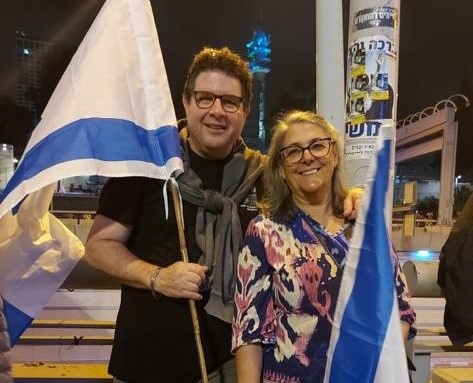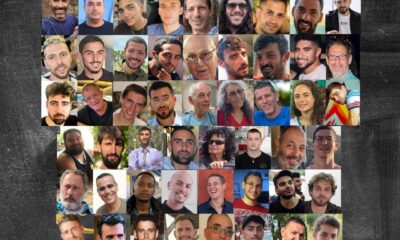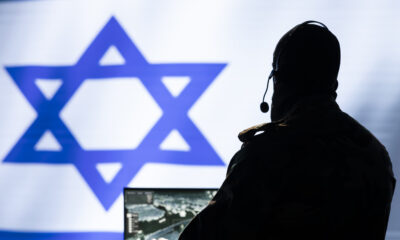
Israel

A mad dash for life-saving safety from Sderot
“I feel like a refugee in my own country,” said ex-South African David Michalowsky, having fled for his life with his wife after spending more than 20 hours inside their Sderot safe room while unimaginable violence and chaos raged outside.
“Am I displaced? How do you define people forced out of their homes in a war?” asked Michalowsky from a relative’s home in Ra’anana. He knows they are lucky to be alive.
Michalowsky, originally from Port Elizabeth and his wife, Jenny, originally from Delmas, both in their sixties, have lived in Sderot, an Israeli city on the border with Gaza, for many years. They love it for its peaceful, pretty, small-town feel, comparing it to places like Oudtshoorn and Graaff-Reinet, with a deep sense of community. They don’t know if they will ever return after the city was ravaged by Hamas terrorists who infiltrated into Israel as the sun rose on 7 October on Shabbat and yomtov.
The Israeli Defence Ministry says about 100 000 Israelis may be internally displaced amid the ongoing war in the Gaza Strip and escalating skirmishes on the Lebanon border. This number is likely to rise.
Michalowsky’s story reads like many others. Sadly, over time, they had grown used to scrambling to their mamad or safe room as terrorists fired missiles from Gaza.
“However, this time, it was different,” he said, “There were gun shots, the terrorists were right outside.”
“It was about 06:45 when we heard the tzeva adom – the red-alert sirens signalling rocket fire. We’ve experienced rocket attacks before, which is usually followed by a lull, maybe more rockets, and then things get back to normal. This was a continuous barrage with explosions, lasting about 45 minutes,” he told the SA Jewish Report.
“The television reports were terrifying. We could see a massive infiltration of terrorists, and they were in the town as well, driving around in bakkies with a machine gun mounted at the back and just killing everyone they saw, ordinary people doing their thing, massacred in cold blood. We were so scared. The police station was under siege.
“We were receiving live images and group WhatsApp messages of the carnage, dead people in the streets, running gun battles against the terrorists, and all of this happening less than 100m from our apartment. There were so many gun shots and frantic messages on TV to stay in the mamad, lock the doors, don’t let anyone in the building. We thought of cutting off electricity to the elevator and locking the fire doors in the stairwell, but no-one knew how to do this.”
Eventually, the couple decided to make a dash for it. “We packed a bag, called our son and daughter and told them we loved them, and left,” said Michalowsky.
“We sped out of the parking lot and what confronted us was like a scene from a zombie movie. There were burnt out cars, abandoned vehicles in the middle of the road, some with their windows shot out and bullet holes in the bodywork, crashed into traffic circles. We drove under rocket fire, knowing there were armed terrorists driving around the city killing people. We feared for our lives.
“We drove past stores with shot up glass windows, with no-one in the streets apart from other residents scrambling to escape. I drove through red lights, overtook on solid white lines, and broke many traffic rules in our haste to leave. It was a mad dash to safety.”
According to Defence Ministry officials, the numbers of those internally displaced are broken down into two main categories: those who have been fully evacuated from their homes, and those who are eligible “to rest and refresh themselves” temporarily at state-subsidised guesthouses.
According to The Times of Israel, about 15 000 Israelis living in 25 communities up to 4km from the Gaza Strip were evacuated last week, and another 27 000 Israelis living in 28 towns up to 2km from the Lebanon border are expected to be evacuated in coming days.
The state will be responsible for these Israelis until the military allows them to return to what’s now a closed military zone near the Gaza border and a restricted area near Lebanon.
Additionally, infrastructure in southern communities will need to be repaired before people can return.
Separately, about 35 000 residents of Sderot and 23 000 Israelis living in 29 towns between 4km and 7km from Gaza are eligible to live for a week at state-subsidised guesthouses.
Ministry officials say not all of those living in those areas have taken the opportunity to leave at this stage.
The ministry is also looking at potentially providing the “rest and refresh” opportunity to some residents of the southern coastal city of Ashkelon, including those without adequate bomb shelters.
From the comfort of his sister’s home, Michalowsky said he and his wife would leave Sderot indefinitely if adequate security measures weren’t put in place. He said while Israel mourned and battled through this, the tragic events had united Israelis and Jews around the world.
“It’s such a pity that it took something so horrific to finally unite the Jewish people. Just last month, the whole nation was split in two. Now you see and sense the unity.”










